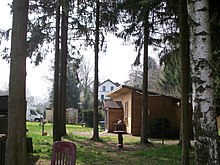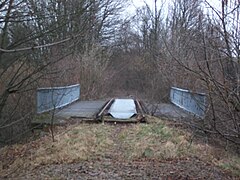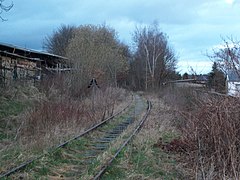Limbach – Wüstenbrand railway line
| Limbach (Sachs) desert fire | |||||||||||||||||||||||||||||||||||||||||||||||||||||||||||||||||||||||||||||||||||||||||||||||||||||||||||||||||||||||||||||||||||||||||||||||||
|---|---|---|---|---|---|---|---|---|---|---|---|---|---|---|---|---|---|---|---|---|---|---|---|---|---|---|---|---|---|---|---|---|---|---|---|---|---|---|---|---|---|---|---|---|---|---|---|---|---|---|---|---|---|---|---|---|---|---|---|---|---|---|---|---|---|---|---|---|---|---|---|---|---|---|---|---|---|---|---|---|---|---|---|---|---|---|---|---|---|---|---|---|---|---|---|---|---|---|---|---|---|---|---|---|---|---|---|---|---|---|---|---|---|---|---|---|---|---|---|---|---|---|---|---|---|---|---|---|---|---|---|---|---|---|---|---|---|---|---|---|---|---|---|---|---|
|
Section of the route map of Saxony from 1902
| |||||||||||||||||||||||||||||||||||||||||||||||||||||||||||||||||||||||||||||||||||||||||||||||||||||||||||||||||||||||||||||||||||||||||||||||||
| Route number (DB) : | 6638 (Limbach (Sachs) dealer) ; sä. LWd |
||||||||||||||||||||||||||||||||||||||||||||||||||||||||||||||||||||||||||||||||||||||||||||||||||||||||||||||||||||||||||||||||||||||||||||||||
| Course book section (DB) : | 170h (1944) | ||||||||||||||||||||||||||||||||||||||||||||||||||||||||||||||||||||||||||||||||||||||||||||||||||||||||||||||||||||||||||||||||||||||||||||||||
| Route length: | 12,144 km | ||||||||||||||||||||||||||||||||||||||||||||||||||||||||||||||||||||||||||||||||||||||||||||||||||||||||||||||||||||||||||||||||||||||||||||||||
| Gauge : | 1435 mm ( standard gauge ) | ||||||||||||||||||||||||||||||||||||||||||||||||||||||||||||||||||||||||||||||||||||||||||||||||||||||||||||||||||||||||||||||||||||||||||||||||
| Maximum slope : | 10 ‰ | ||||||||||||||||||||||||||||||||||||||||||||||||||||||||||||||||||||||||||||||||||||||||||||||||||||||||||||||||||||||||||||||||||||||||||||||||
| Minimum radius : | 300 m | ||||||||||||||||||||||||||||||||||||||||||||||||||||||||||||||||||||||||||||||||||||||||||||||||||||||||||||||||||||||||||||||||||||||||||||||||
|
|||||||||||||||||||||||||||||||||||||||||||||||||||||||||||||||||||||||||||||||||||||||||||||||||||||||||||||||||||||||||||||||||||||||||||||||||
The Limbach – Wüstenbrand railway was a branch line in Saxony . It connected the industrial city of Limbach (now part of Limbach-Oberfrohna ) with Wüstenbrand (now part of Hohenstein-Ernstthal ) on the Dresden – Werdau railway line .
history

The small industrial town of Limbach had already had a rail connection to the Neukieritzsch – Chemnitz line since 1872 . However, the city soon wanted to have another, more direct connection to the Dresden – Werdau railway line. The background to this demand was for from especially a shorter and cheaper transport Lugau-Oelsnitzer ground -based coal to create. Because in Limbach, hand knitting and hand chain chairs were manufactured for the knitted goods industry , which was also located there, and later also mechanical circular knitting and chain machines , as well as special sewing machines for the manufacture of knitted goods.
In the course of 1896, construction work began on the short connecting line. The construction of two larger viaducts was necessary over the Auritztal and near Rabenstein. The new line was opened on November 30, 1897.
On December 31, 1950, continuous operation was discontinued due to the low level of traffic.
On April 10, 1951, a section of the line was officially closed. Three days later, the dismantling of the track system between Röhrsdorf station and kilometer 6.565 began. The section from kilometer 6.565 to the Schützenhaus junction was initially used to transport building materials for the construction of the Kulturpalast in Rabenstein; it was not until 1952 that the tracks were dismantled here. The section between the Schützenhaus junction and Wüstenbrand was later assigned to the Chemnitz – Obergrüna line . On September 30, 2004, this remaining piece was also shut down.
The Röhrsdorf station, on the other hand, was still served by freight traffic until 1959, after which there were only occasional handover trips to the Kändler station and the substation in Röhrsdorf. These were also discontinued on December 31, 1994 and the line was closed on June 6, 1996.
outlook
As part of the Chemnitz model , a long-term reconnection of the city of Limbach-Oberfrohna to rail passenger transport is planned. For this purpose, the first 2 km of the route should be put back into operation. The route will then branch off from the old route between KÄNDERER and Röhrsdorf.
Route description
course
Beginning at Limbach (Sachs) station , the railway line ran parallel to the Limbach – Wittgensdorf railway line on a high embankment towards the east. In this area the tracks are still preserved, but the dam is overgrown with trees and bushes. The "Ostring" runs parallel to this today in Limbach-Oberfrohna, which serves as a feeder to the federal motorway 72 . After the “Am Tännigt” railway crossing, the line turned to the southeast and left the route to Wittgensdorf. Shortly afterwards, at 1.52 km, the Kändler stop was reached, of which there are no more witnesses today. Behind the stop, “Bahnhofstraße” was at ground level and “Hauptstraße” and the Pleißenbach were crossed on two bridges . Both bridges are preserved. Behind the “Kirchstrasse” level crossing in KÄNDER, the siding branched off to the Röhrsdorf substation, which now ran parallel to the Röhrsdorf stop (near Chemnitz) . This stop, of which there are no more witnesses and was built over by the substation, was reached at 3.17 kilometers behind the “Haardt” level crossing. The railway then headed south and crossed federal motorway 4 via the Auritzbachtal viaduct . Only the pillars that are visible from the motorway remain of the former bridge. At the "Kreisigstraße" in Rabenstein today a small monument called "Eselsbrücke" commemorates the former overpass. The railway then ran to the southwest and shortly afterwards reached the Rabenstein Viaduct and then the Rabenstein (Sachs) station . There is a footpath on the former route. Most of the buildings at Rabensteiner Bahnhof have been preserved. In the Rabensteiner Forest that followed , the Küchwald – Obergrüna railway joined at the Schützenhof junction at kilometer 8.528 . Grüna (Sachs) above Bf was reached at kilometer 9.81 . The station building has been restored from a historical perspective. In the Grüna area, the rails are still passable, as a rail vehicle in the train station shows. After nearly 12 kilometers, the railway finally flows in the station Wüstenbrand in the Dresden-Werdau railway one.
Operating points
Limbach (Sachs) ⊙
The station Limbach was born on April 8, 1872 together with the Neukieritzsch-Chemnitz railway and in Wittgensdorf ob Bf in this opens railway Limbach-Wittgensdorf opened. The Limbach-Wüstenbrand railway line opened in 1897 and the Limbach – Oberfrohna railway line opened in 1913 , making Limbach station a hub.
It had the following names:
- until 1902: Limbach
- until 1904: Limbach near Chemnitz
- until 1911: Limbach (Saxony)
- until 1933: Limbach (Sa)
- since 1933: Limbach (Sachs)
1950 ended the passenger traffic on the railway line to Wüstenbrand. After that, goods traffic to Röhrsdorf (last time in 1959) or to the Röhrsdorf substation and the Kändler station (until 1994) took place on a section.
Since the cessation of passenger traffic on the route from Wittgensdorf ob Bf to Oberfrohna in 2000 and the closure in 2003, the station has been out of service. A reactivation as part of the Chemnitz model is conceivable. The area of the train station is located on the Ostring and leaves a neglected impression. In 2015 the central part of the reception building as well as the reception and luggage hall were demolished. The two multi-storey side wings were preserved.
Kellers ⊙
The stop Kändler was opened on December 1, 1897th In 1905 it was upgraded to a station and in 1933 it was dedicated to a stop. It consisted of two points, a loading platform with a ramp and a wooden bus shelter with free access, none of which is left today.
After continuous operation and passenger traffic on the Limbach-Wüstenbrand railway line was discontinued on December 31, 1950 due to its low traffic significance, the tracks behind the Röhrsdorf station in the direction of Wüstenbrand were closed on April 10, 1951 and the tracks were dismantled up to km 6.565. Since December 31, 1950, the Klassung stop had been a loading point, to which occasional handover trips still took place. Furthermore, trains occasionally drove to the Röhrsdorf substation on the route. After setting these cruises at 31 December 1994, the decommissioning of the section and the loading point Kändler took place on June 6, 1996. From the former station Kändler testify the streets "Am Bahnhof" and the "Bahnhofstrasse" in Kändler and a railway bridge over the "Main street", which was just behind the station in the direction of the desert fire. The area of the former train station shows hardly any traces of rail traffic since the Bahnhofstrasse was expanded and a residential estate was built on the area behind the train station. The goods shed no longer exists either.
Röhrsdorf (b Chemnitz) ⊙
The Röhrsdorf stop near Chemnitz was opened on December 1, 1897. In 1905 it was upgraded to a station and in 1933 it was dedicated to a stop. The station had the following names:
- until 1911: Röhrsdorf near Chemnitz
- until 1933: Röhrsdorf b Chemnitz
- since 1933: Röhrsdorf (near Chemnitz)
After continuous operation and passenger traffic on the Limbach-Wüstenbrand railway line was discontinued on December 31, 1950 due to its low traffic significance, the tracks behind the Röhrsdorf station in the direction of Wüstenbrand were closed on April 10, 1951 and the tracks were dismantled up to km 6.565. Röhrsdorf station had been a loading point since December 31, 1950, which was still used for freight traffic until 1959. After that, there were occasional handover trips to the neighboring Röhrsdorf substation, which had a siding, and to the Klassung train station. After these trips were discontinued on December 31, 1994, the section was closed on June 6, 1996. There are no remains of the former Röhrsdorf station (b Chemnitz) , which is located near the “Haardt” road, except for the birch-covered track including tracks received. Its area is partially used by the neighboring substation. The connecting track to the substation is still there.
Rabenstein (Sachs) ⊙
The Rabenstein (Sachs) station was opened on December 1, 1897 with the start of rail traffic on the Limbach-Wüstenbrand line. In the direction of Wüstenbrand it is located directly behind the Rabensteiner Viaduct. After continuous operation was discontinued on December 31, 1950 due to the low level of traffic, the tracks between the Rabenstein and Röhrsdorf stations were dismantled. Until 1952, the section between the current Rabenstein loading point and the Schützenhof junction was still used for construction work on the Kulturpalast in Rabenstein, after which the section was closed. Shortly before the end of rail traffic, the station was given the name Chemnitz-Rabenstein when it was incorporated into Chemnitz in 1950 and, after the city was renamed in 1953, Karl-Marx-Stadt-Rabenstein .
Just like the Rabensteiner Viaduct, the small waiting hall was preserved. It has been restored and is now used as a garden shed. Only the goods shed was demolished in 1996. The area around the train station is now used as a parking lot for hikers in the adjacent Rabenstein Forest.
Grüna (Sachs) whether Bf ⊙
Grüna (Sachs) ob Bf was opened on December 1, 1897 as the Obergrüna stop . In 1905 it was upgraded to a station. It had the following names:
- until 1910: Obergrüna
- until 1911: Grüna (Saxony) ob Bf
- until 1933: Grüna (Sa) ob Bf
- since 1933: Grüna (Sachs) ob Bf
After 1858 at the Dresden-Werdau railway built breakpoint Grüna (Sachs) Grüna (Sachs) was ob Bf the second station of Grüna . It was opened with the opening of the Limbach – Wüstenbrand railway in 1897. Since 1903, the Küchwald – Obergrüna railway has flowed into the Schützenhaus junction near the Obergrüna train station .
After continuous operation on the Limbach-Wüstenbrand railway line was discontinued on December 31, 1950 due to its low traffic importance, the line from the direction of Wüstenbrand initially remained up to kilometer 6.565 (behind Rabenstein station). After the Schützenhaus junction-kilometer 6.565 was closed in 1952, the Wüstenbrand-Schützenhaus junction with the Grüna (Sachs) station above Bf was added to the Küchwald-Obergrüna railway line. On this the operation ended in 2004, whereby Grüna ob Bf lost its importance. The reception building, which has been restored from a historical perspective, is located on August-Bebel-Straße in Grüna. The route in front of the train station is intact and can be traveled by rail vehicle.
Desert fire ⊙
The desert fire station has existed since the opening of the Dresden-Werdau railway in 1858. Initially only been here coal train Lugau-Wüstenbrand the Chemnitz-Würschnitzer railway company involved (later to Carve calibration (now Station Neuoelsnitz was extended)), came in 1897 nor the Limbach – Wüstenbrand railway line added. The latter partly served together with the opening of the Küchwald – Obergrüna railway line after 1903 as a diversion route for the Chemnitz – Wüstenbrand section.
The railway lines to Limbach, Neuoelsnitz and Küchwald are closed today, but desert fire has a certain function as an overtaking opportunity in the course of the remaining main line. There are also two freight tracks that are currently not in use.
Vehicle use
Initially, both the class IIIb T and the class IV were used in front of freight and passenger trains. Later these were replaced by the more powerful IV T type .
From the end of the 1920s, almost exclusively Prussian T 12 (series 74.4-13), Saxon XIV HT (series 75.5) and Saxon XI HT (series 94.19-21) were used on the route. These were replaced in 1941 by the unit locomotives of class 64 that until the closure of the route coped with all the traffic.
Relics
The most striking evidence of the railway line, which has been closed for decades, is the Rabenstein Viaduct, which is now used as a hiking trail. Because of its special construction, it has been a listed building since 1986.
Part of the route has also been preserved, some of which is covered with trees. The location of the former Auritztal viaduct, under which today's federal motorway 4 ran from the mid-1930s, is also clearly recognizable .
literature
- Erich Preuß , Reiner Preuß : Saxon State Railways. transpress Verlagsgesellschaft mbH, Berlin 1991, ISBN 3-344-70700-0 .
- Stephan Häupel, Eberhard Schramm, Jürgen Viehweger: Branch lines around desert fire . Verlag Kenning, Nordhorn 1998, ISBN 3-927587-94-X ( secondary line documentation 43).
Web links
Individual evidence
- ↑ Route data on www.sachsenschiene.de
- ↑ Railway Atlas Germany 2007/2008 . 6th edition. Schweers + Wall, Aachen 2007, ISBN 978-3-89494-136-9 . , P. 133
- ^ History of the city of Limbach
- ↑ a b Federal Railway Authority: Disused routes ( Memento of the original from September 29, 2015 in the Internet Archive ) Info: The archive link has been inserted automatically and has not yet been checked. Please check the original and archive link according to the instructions and then remove this notice.
- ^ Hans-Ulrich Siebert: Rabensteiner Lines. Searching for traces - the LWd line from Limbach to Wüstenbrand. July 24, 2010, accessed November 10, 2012 .
- ↑ Partial demolition of the Limbach train station in the Freie Presse on July 14, 2015
- ^ The Limbach-Wüstenbrand railway line in the LokMagazin
- ↑ The Kellers tram stop at www.sachsenschiene.ne
- ^ The Rabenstein (Sachs) train station on www.sachsenschiene.net
- ^ Website about the railway in Rabenstein
- ↑ Article about Grüna ob Bf ( Memento of the original from April 27, 2016 in the Internet Archive ) Info: The archive link was automatically inserted and not yet checked. Please check the original and archive link according to the instructions and then remove this notice.
- ↑ Tracks in service facilities - as of October 1st, 2012 (PDF document; 164 kB)
















